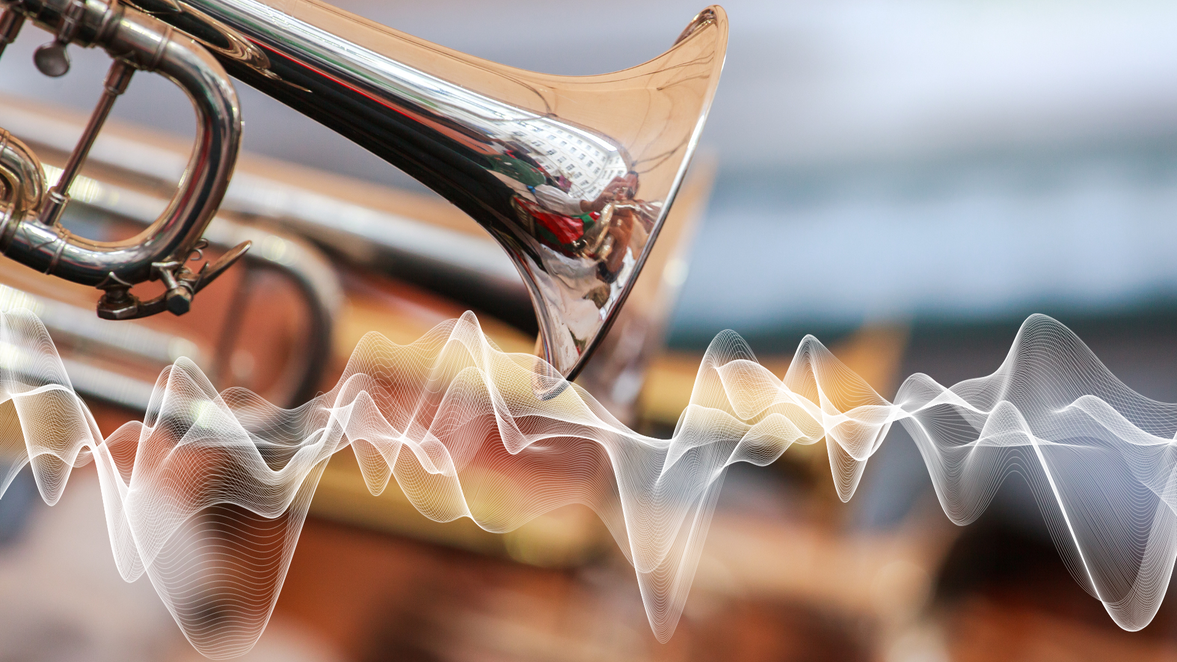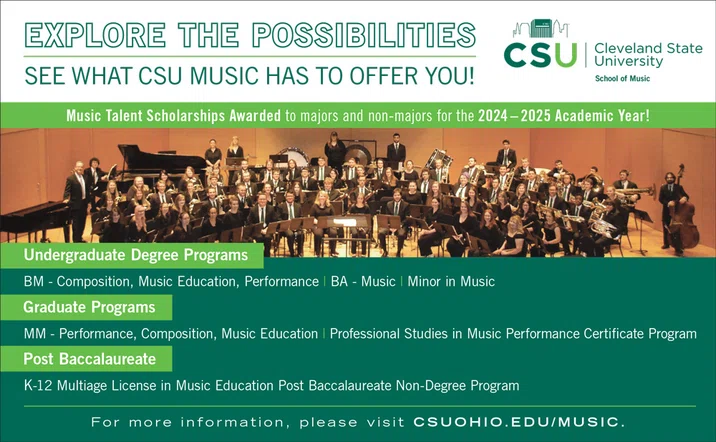©2023 Ohio Music Education Association



FEATURED ARTICLE
Creating Different Soundscapes in the Concert Band
Creating Different Soundscapes in the Concert Band
Aaron Backes

I don’t know about other music educators, but my talent as an artist all went to music. I can’t draw. I can’t paint. I can’t take beautiful landscape photography. However, I love learning and creating different sounds, textures, and timbres. One of my strengths and favorite things as a young saxophonist was to discover the distinctive colors and moods when I would play a new piece of music. Throughout my teaching career, I have strived to teach students music that allows them to experience different soundscapes within the band.
I know many of us as band directors can be overwhelmed with picking music. That’s understandable. It’s a huge challenge! It takes a ton of time! You are asking yourself all kinds of difficult questions. Will this allow me to teach important rhythms and styles to the students? Will this be too difficult? Do I have trumpets that can play that part? Does it fit with the other pieces on the program? I LOVE picking music. That is where I feel like an artist. I enjoy getting to hear new pieces of music or listen to the classics of the repertoire and imagine how my band will sound playing them. I think about what my students learn and feel like when they are playing them. My main priority is always making sure the music is high quality. There are times where our profession meets the challenge of finding quality repertoire. However, there are certainly times where music that is being put out there or we are programming music is not exposing our students to the best artistry in music.
We have a responsibility as music teachers, regardless of our students’ age or ability level, to expose them to different textures, emotions, and stories that music can create. When our students come to the band room, are they only playing music that sounds like a 19th century Sousa march? Are they playing and hearing different styles, harmony, and scoring as they play with their peers? Are they hearing new timbres as well as familiar sounds they hear in their modern world? If we work hard and utilize our strengths as musical artists and teaching artists, we can give our students a variety of sound palettes each day when they come to class by the music that we give them and how we teach it. Let’s be honest, our students, particularly our novice teenage instrumentalists, can create artistic timbres all on their own. Accidental saxophone multiphonic? Done. Annoying mouthpiece sirens from multiple instruments? Check. Meme ditties on the xylophone? They’ve got it covered.
Besides finding music that is high quality, and accessible to the students, the other thing we can really do to help improve the soundscape of our band is to find a variety of music. When I am picking repertoire that I want our high school and middle school bands to learn, and perform, I often ask myself what is this going to sound like played back-to-back, both in class and in a concert. Also, when I am teaching it, will I be able to teach different perspectives and techniques? I teach differently if my students are learning Country Wildflowers by Larry Daehn than if they are learning Foundry by John Mackey. Will the students and I be listening to different colors? If all of the pieces have upper woodwinds and trumpets playing the melody with simple harmonic low brass accompaniment, are we just going through the motions and spitting out the answer to a formula, rather than getting to be individuals, artists, and musicians?
I love seeing our students’ faces when they get to hear aural images that are created by artistic composers. Nothing can compare to the first time they hear the unusual color of a bowed vibraphone, a finger on a water glass, or trumpet with a cup mute. Alex Shapiro’s Tight Squeeze or Jodie Blackshaw’s Whirlwind give them a different acoustical setting in class than Irish Rhapsody by Clare Grundman or a Karl King march. The students need to be given music that sounds different in order to learn to play differently. Even though we must focus so much on technical skills, especially with our beginning and middle school students, we have so many intelligent and creative students that can expand their playing by learning to listen differently. If they are taught to hear things like dissonant chords, accented metallic percussion sounds, and dark chromatic lyrical bass lines, we can give them the tools to portray different moods and emotions in music.
When we teach our students a new piece of music, we can help them expand their aural skills and musicianship by teaching them the contour of the piece. A repeated ostinato eighth line probably is not going to create emotion by itself. But, showing them that by phrasing it with a great crescendo balanced underneath or on top of a lyrical melody can influence the energy and shape of the music being played by their peers can help them to connect as an ensemble. We can help them understand that the blend of the rich, dark sound of the chalumeau clarinet register combined with euphonium and horn color is helping to create a certain mood.
We have a responsibility to find a variety of artistic music for our students. The soundscape of the modern concert band should have a variety of style and scoring as well as lyrical expression, contemporary techniques, harmony, and colors. Our musical canvas should be a combination of traditional wind band repertoire as well as innovative contemporary works. The artistic palette of the wind band should include sounds from different cultures and diverse composers that is inclusive to all our students and helps to expand the diversity, and accessibility of the profession. As music educators, we are all teachers, but we also can make time to be artists and nurture our students into artists.

SHARE ARTICLE:



